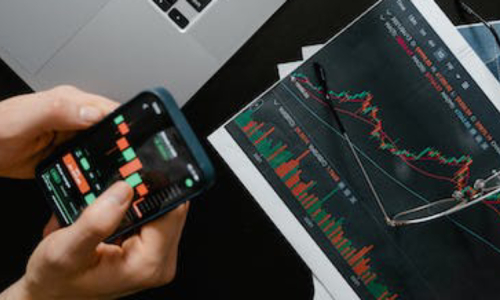Serviços de tradução de documentos de autorização de patente
Documentos de autorização de patente são instrumentos legais cruciais que significam a concessão de uma patente por um escritório de patentes. Esses documentos confirmam os direitos legais de um inventor ou cessionário para proteger sua invenção e servem como uma referência fundamental na aplicação de direitos de patente contra potenciais infratores. A tradução de documentos de autorização de patente é um campo altamente especializado que exige um profundo entendimento da linguagem jurídica e técnica. Este artigo explorará os diferentes tipos de documentos de autorização de patente, os desafios envolvidos em traduzi-los e as melhores práticas para garantir traduções precisas e confiáveis.

Melhores práticas para tradução de documentos de autorização de patente

Colaboração com especialistas jurídicos e técnicos
- Dada a natureza complexa dos documentos de autorização de patentes, muitas vezes é benéfico para os tradutores trabalhar em estreita colaboração com especialistas jurídicos e técnicos. Esses especialistas podem fornecer insights e orientações valiosas sobre termos jurídicos e técnicos específicos, garantindo que a tradução seja precisa e apropriada para a jurisdição de destino.
Uso de ferramentas de tradução especializadas
- Utilizar ferramentas de tradução especializadas, como sistemas de memória de tradução e bancos de dados de terminologia, pode ajudar a manter a consistência em projetos de tradução de patentes grandes e complexos. Essas ferramentas permitem que os tradutores armazenem e reutilizem conteúdo traduzido anteriormente, garantindo que os mesmos termos e frases sejam usados consistentemente em todo o conjunto de documentos.
- Bancos de dados de terminologia são particularmente úteis no gerenciamento do vocabulário especializado usado em direito de patentes e campos técnicos específicos. Esses bancos de dados podem ser personalizados para incluir traduções preferenciais, termos legais e jargões técnicos, ajudando a garantir que a tradução seja precisa e consistente.
Processos de Garantia de Qualidade
- Implementar um rigoroso processo de garantia de qualidade (QA) é essencial para garantir a precisão das traduções de patentes. Esse processo deve incluir várias rodadas de revisão, incluindo verificações de precisão legal, correção técnica e qualidade linguística. O processo de QA também pode envolver validação por um segundo tradutor ou especialista legal para detectar quaisquer erros ou ambiguidades.
- Glossários, guias de estilo e materiais de referência devem ser usados para garantir que as traduções sigam os padrões exigidos e mantenham a consistência em todos os documentos.
Compreendendo o contexto jurídico
- Os tradutores devem ter um profundo entendimento do contexto legal no qual os documentos de autorização de patente serão usados. Isso inclui conhecimento das leis e regulamentações de patentes na jurisdição alvo, bem como os requisitos específicos para documentos de autorização de patentes. Entender o contexto legal ajuda a garantir que a tradução não seja apenas precisa, mas também legalmente válida e executável.
Formação Contínua e Desenvolvimento Profissional
- O campo da tradução de patentes está em constante evolução, com novas tecnologias, desenvolvimentos legais e melhores práticas surgindo regularmente. Os tradutores de patentes devem se envolver em treinamento contínuo e desenvolvimento profissional para se manterem atualizados com as últimas tendências e avanços na tradução de patentes. Isso pode incluir participar de conferências do setor, participar de programas de treinamento especializados e se manter informado sobre mudanças na lei e tecnologia de patentes.
Desafios na tradução de documentos de autorização de patentes
Precisão jurídica
- Documentos de autorização de patente são juridicamente vinculativos, e quaisquer imprecisões na tradução podem resultar em disputas legais, perda de direitos de patente ou dificuldades na execução da patente. Os tradutores devem ser bem versados em terminologia e conceitos legais para garantir que a tradução seja precisa e juridicamente sólida.
Complexidade Técnica
- Muitas patentes envolvem assuntos técnicos complexos, e os documentos de autorização frequentemente fazem referência a aspectos técnicos específicos da invenção. Os tradutores precisam ter um forte entendimento do campo técnico relevante para traduzir esses documentos com precisão. Entender mal ou traduzir incorretamente termos técnicos pode levar a problemas significativos, como má interpretação do escopo da invenção.
Diferenças culturais e jurisdicionais
- Diferentes países têm sistemas legais variados, e a maneira como os direitos de patente são concedidos e aplicados pode diferir significativamente de uma jurisdição para outra. Os tradutores devem estar cientes dessas diferenças para garantir que os documentos traduzidos sejam apropriados para a jurisdição de destino. Isso inclui entender como os termos e conceitos legais podem diferir entre os idiomas de origem e de destino.
Consistência entre documentos
- Os documentos de autorização de patente geralmente fazem parte de um conjunto maior de documentos relacionados ao pedido de patente e ao processo de acusação. É crucial que a tradução desses documentos seja consistente com os outros documentos relacionados, como o pedido de patente, ações de escritório e correspondência legal. Inconsistências podem levar a confusão ou desafios legais.
Requisitos rigorosos de formatação e estrutura
- Os documentos de autorização de patente devem aderir a diretrizes específicas de formatação e estrutura, conforme exigido pelos escritórios de patentes. Os tradutores devem garantir que os documentos traduzidos estejam em conformidade com essas diretrizes, incluindo a manutenção da numeração correta de reivindicações, seções e referências. Qualquer desvio do formato exigido pode resultar na rejeição do documento pelo escritório de patentes.

Por que nos escolher
Citação de tradução
O preço dos nossos serviços de tradução depende dos seguintes determinantes:
- Complexidade profissional e intrincada de dados
- Língua de origem
- Língua alvo
- O volume total de dados a serem traduzidos
- Complexidade do processamento técnico
- Restrições de tempo
- Especificações de layout
- Proporção de vocabulário especializado
- A necessidade de revisores estrangeiros e nível de urgência, etc.
Para obter o orçamento mais preciso para seu projeto de tradução comercial, preencher nosso formulário de orçamento é a melhor abordagem.

